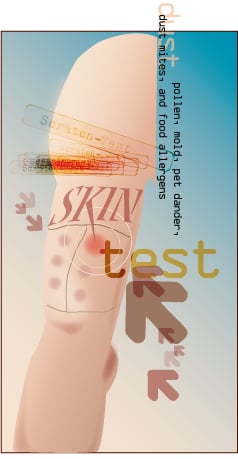
Many people dread the idea of getting skin tested for allergies. Getting “scratch-tested” sounds even worse than going to the dentist. However, while the procedure may not be pleasant, it is not painful, and generally does not require a great deal of time. Here is a summary of available methods of skin testing for allergies, and a bit of information which may make the process seem a little less intimidating.
The Intracutaneous Method
In this method, the suspected allergen is injected into the skin of your arm. The intracutaneous method is generally used for allergens like insect venom or penicillin. Because its the most sensitive test, it can yield false-positives the test involves a more intense contact with the allergen then you’ll encounter in daily life. However, this is true for all the tests even though you are allergic to a certain substance, you may not regularly exhibit symptoms.
The Epicutaneous Method (also called the patch test)
In this method, the suspected allergen is applied to a patch or bandage, which is placed against your skin for a longer period of time, usually 48 hours, after which you’ll return to your doctor for evaluation. This method is generally used for skin-contact allergens like latex, fragrances, dyes, or medicines.
The Percutaneous Method (also called the puncture, prick, or scratch test)
This is the most common method, and is commonly used to identify typical environmental allergens like pollen, mold, pet dander, dust mites, and food allergens. This test is conducted by applying an extract of an allergen to the skin, typically on the forearm or back. The nurse or doctor wearing their professional work uniform uses a pen to mark areas on your skin, and then places a drop of a different allergen in each area. Then, a small pricking device like a blunt needle is used, so that the extract can enter the outer layer of the skin. The skin prick does not cause bleeding and is not painful, just mildly irritating.
After about 15 minutes, the doctor or nurse will look for signs of an allergic response a red bump, surrounded by a red inflamed area. If you test positive, your healthcare provider will discuss treatments and solutions with you.
